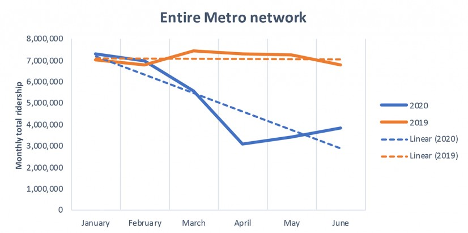Reality Check | ecoWURD | radio
University of Penn transportation expert Megan Ryerson joined ecoWURD radio on WURD’s Reality Check with Charles Ellison to discuss the fate of mass transit public transportation systems as they struggle through pandemic. Big city mass transit systems like Philadelphia’s SEPTA are facing dark and uncertain times as coronavirus has forced social distancing and dramatic drops in ridership on buses, subways, trolleys and regional rail lines. What does that not only mean for mass transit, but for the populations – such as low-income workers – who rely on it the most?
“What we’re seeing right now is that the commuters and jobs where people can remote work are not using mass transit,” says Professor Ryerson. “Services like regional rail ridership is very depressed. Our bus and subway and trolley system What the pandemic showed us is that there is a population that relies on mass transit to get to essential service jobs during this pandemic, whether in the medical field, grocery or retail.”
“Unfortunately, the pandemic has shifted a lot of the progress we made on more sustainable transportation models other than driving. This has shifted people back the other way into cars. So, for example, I’m hearing reports of people building more parking. We need to think about the populations that mass transit really needs to serve. We need to plan mass transit around the people who need it most rather than the wealthy.”
Mass transit is a $71 billion sector that employs over 430,000 people, according to the American Public Transportation Association. Those agencies will face a nationwide $40 billion shortfall; 65 percent of those agencies have already cut services as a result of fewer riders. An August 2020 Rice University analysis showed mass transit ridership dropping significantly across the board in all cities where there are public transportation systems ….


Even as studies continue to show that mass transit is not a significant “vector” for spreading viruses, ridership remains low.



